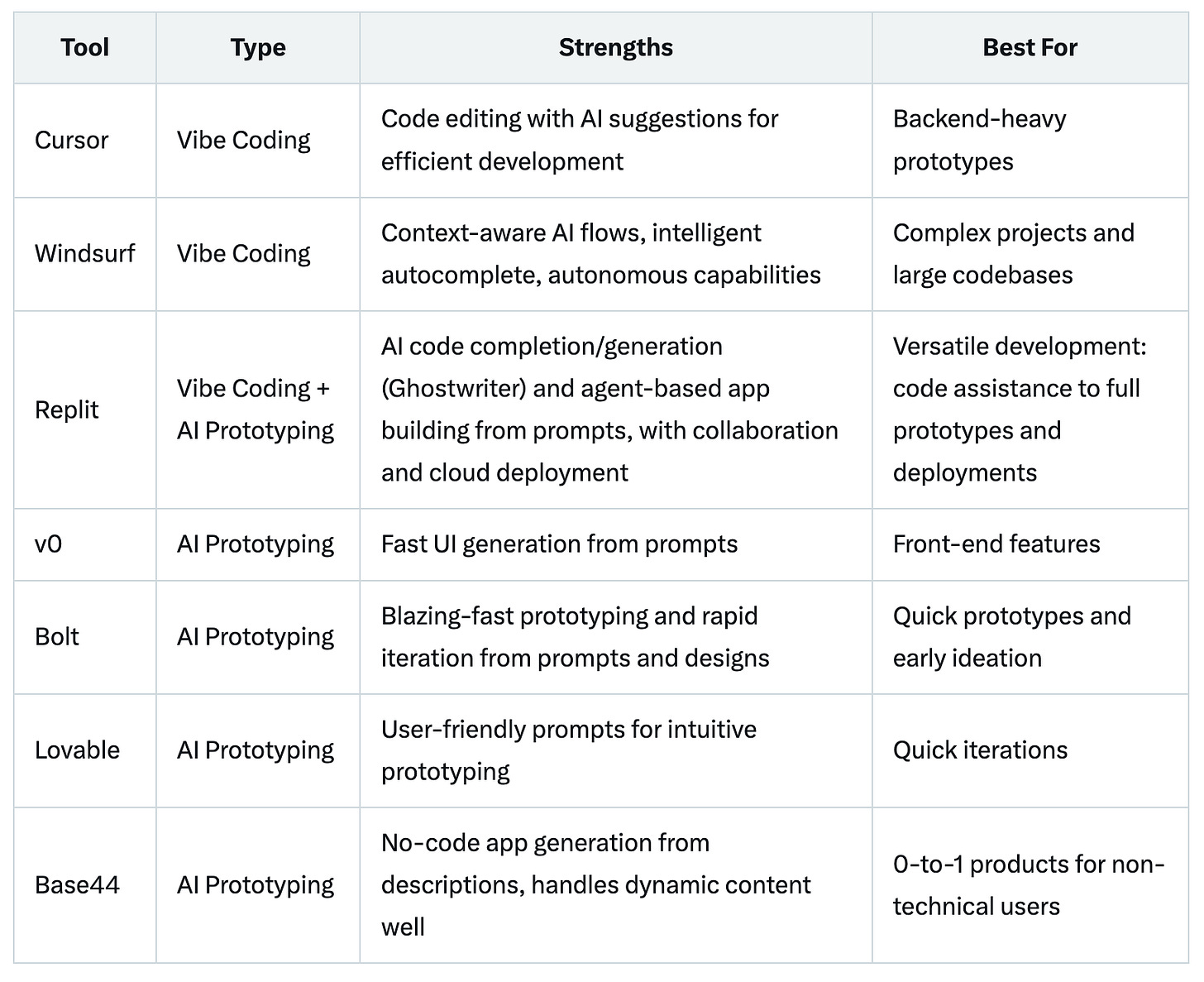How to Ace the Vibe Coding Interview
The newest interview coming to surprise you
A new interview’s broken into the Google PM Process:
If you’re like many PMs, your reaction to this news was along the lines of the most upvoted Reddit comment:
I've been a PM for a while now and I don't know what any of this is.
That’s what today’s piece is for.
Yes, It’s Real
Now I know what you’re asking:
Is Google really doing this?
And why didn’t the recruiter warn them?
I reached out to several Google PMs and interview coaches.
Here’s what I learned: right now this is relegated to the Google AI PM roles in India. It is not a standard part of Google’s process for all PMs in the US.
As of now. It very well could be in the future. In fact, I expect it to.
That’s because many other companies are already using this interview.
I’ve coached several people who have encountered this round, including PMs interviewing at v0, Bolt, Figma, and Perplexity (ie, the hottest companies around).
And I forecast that many more companies will be adding this round.
Today’s Post
So, ahead of that, in today’s post, I’m going to build up all the knowledge you need to know to nail this interview:
The Basics
What is vibe coding and what is the format of the interview
The new PM skill set and why they are asking (plus why more will)
Nailing the Interview
What separates a winning from a failing response on this interview
My framework to use for any vibe coding interview
What to do if you’re totally caught off guard
Examples and Practice
The most common mistakes I’ve seen coaching candidates on it
The ultimate vibe coding interview question bank
1. The Basics
1.1 What is vibe coding and what is the format of the interview
Vibe coding, in this context, is the use of an AI coding (eg, Cursor, Windsurf, or Replit) or AI prototyping tool (eg, Lovable, Bolt, Base44, or v0).
My mentees have encountered three different formats of this interview
The 45-minute prototyping case
The product design case with a prototyping component
The homework assignment where a prototype is mentioned in the prompt
Here’s how each actually unfolds in the room.
Type 1: The 45-minute prototyping case
This first type of case is what the Google AI PM interviewee in India faced.
Typically, the prompt is clear: use any vibe coding tool of your choice to create a version of x feature. The prompts fall into three major buckets:
Design X feature for us
Design Y feature on Z famous product
Build a prototype of X new 0 to 1 product
In this type of case, you need to build a structured framework to design the feature before just prototyping it.
But a lot of the assessment is how well you prototype.
Type 2: The product design case with a prototyping component
This second case is anywhere from 30-60 minutes and typically involves a more challenging design prompt. For instance:
Design Google Maps for the Blind
How would you prototype a Facebook Dating app
These types of cases require a strong product design case up front (identifying user needs and brainstorming creative solutions), followed by a good but quick prototyping session.
Type 3: The homework assignment where a prototype is mentioned in the prompt
This final type of vibe coding interview has been used at places as mainstream as Stripe and Netflix.
They give you a broad prompt, like:
Design a Netflix product to support Partner Studios.
Then you have to go through all the elements of a strong product design interview.
Multiple candidates I’ve coached had to submit a final 1 pager with a link to the prototype.
So, that covers the three main types of PM vibe coding interviews!
1.2. The new PM skillset and why they’re asking (plus more will in the future)
The nature of the PM role is undergoing its biggest shift since the shift from input to output metrics ~5 years ago.
AI is ushering in a new era of AI PMs, who:
Build AI features, getting into technical details like evals
Use AI to focus on high leverage tasks
That’s why PM interviews are now focusing on all three of these topics.
Just like the shift to output metrics and strategy led to the growth of product metrics and product strategy interviews, this latest shift to AI PMs is driving the growth of the product vibe coding interview.
Many companies are still in the process of adapting to this AI-first reality. Their PMs don’t have licenses to AI prototyping and vibe coding tools.
But as those companies fall further behind and replace their old IT policies with AI-first ones, the nature of the PM job will shift there as well.
And a short while after the job shifts, the interviews will have to shift as well.
Interviews exist to find candidates who can do the job: and vibe coding (aka AI prototyping) is a core part of the PM job for forward-looking companies.
AI prototyping tools are a better way to convey ideas than a PRD, and help PMs actually think through all the edge cases & flows around the periphery.
So the growth of this interview type is inevitable.
2. Nailing the Interview
2.1 What separates a winning from a failing response in this interview
Having worked with so many different candidates who have failed and succeeded on this round, here’s what I’ve learned.
Keep reading with a 7-day free trial
Subscribe to Product Growth to keep reading this post and get 7 days of free access to the full post archives.




